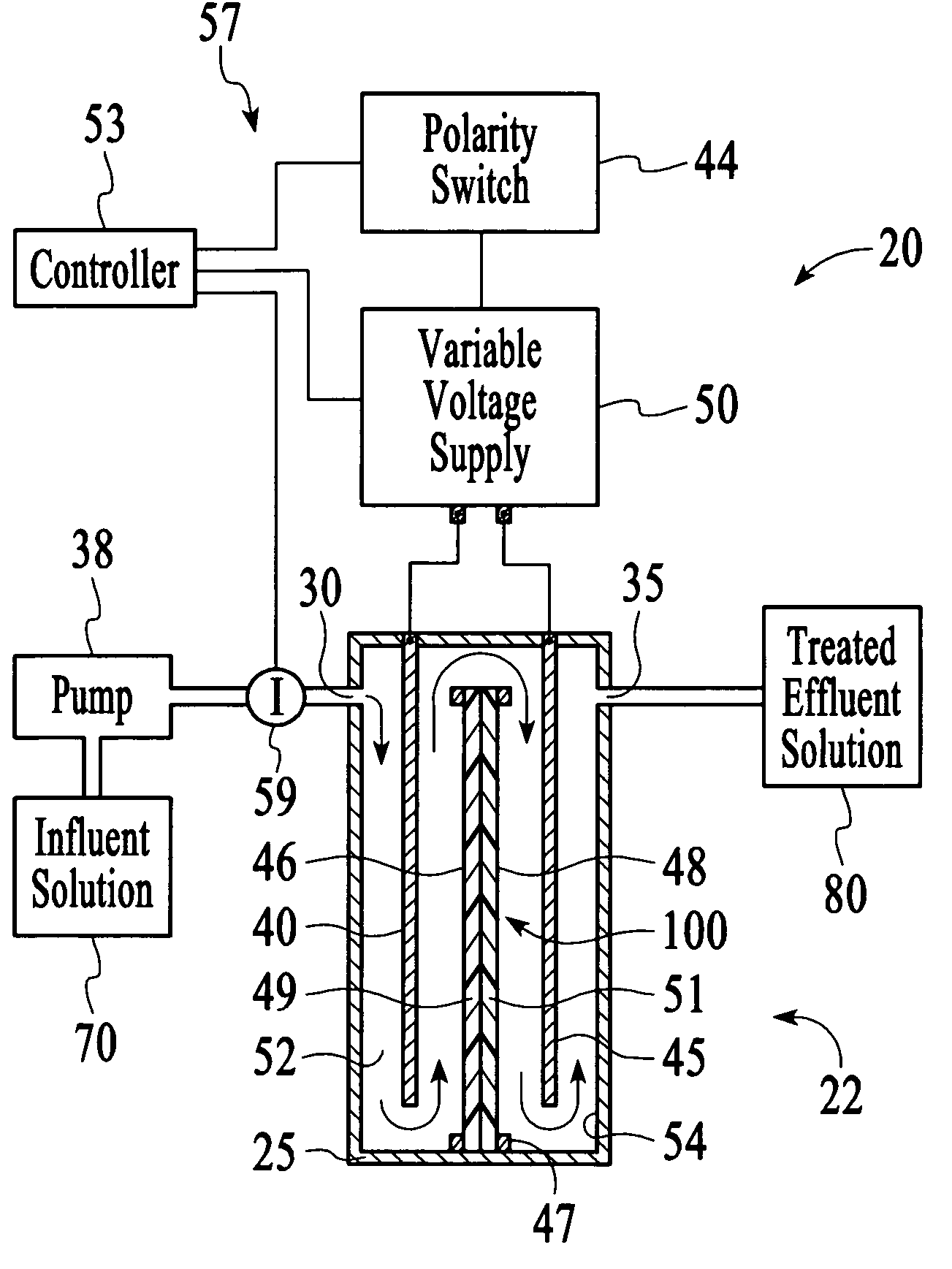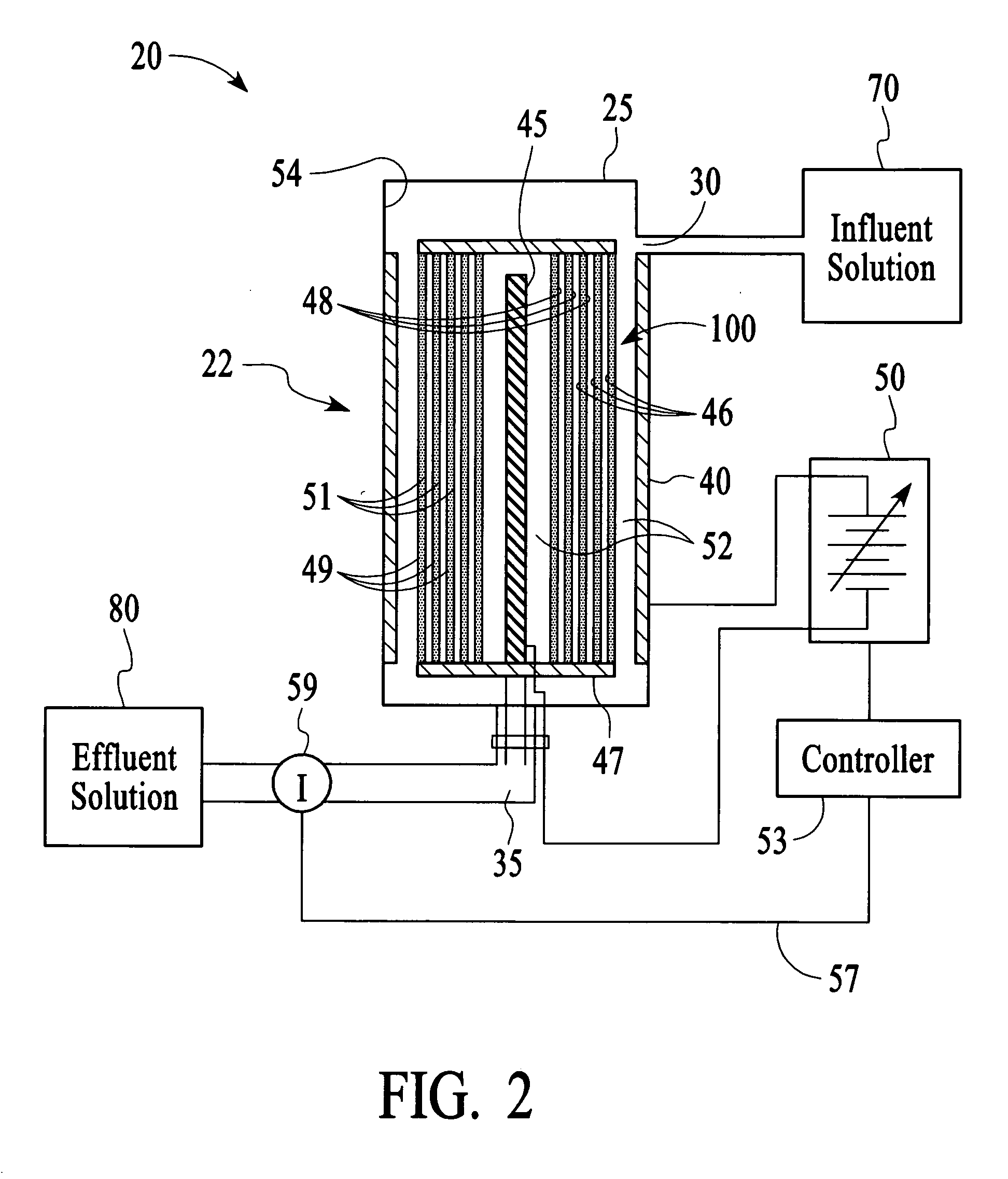Selectable ion concentrations with electrolytic ion exchange
a technology of electrolysis and ion exchange, applied in the direction of electrodialysis, water/sewage treatment by ion exchange, refrigeration components, etc., can solve the problems of undesirable variations in the output tds content, the fraction of tds removal with influent solution quality, and the limitations of conventional electrolytic assisted ion exchange systems
- Summary
- Abstract
- Description
- Claims
- Application Information
AI Technical Summary
Benefits of technology
Problems solved by technology
Method used
Image
Examples
example 2
Variable Voltage
In this example, the apparatus 20 comprised the cell 22 of Example 1 having an ion sensor 59 that was a conductivity sensor that was connected to a controller 53 comprising a microprocessor to interpret the ion concentration signal and control the output voltage of a variable voltage supply 50. The target ionic conductivity in this experiment was 125 μS / cm. Previous experiments determined the output voltages, which would be employed for various deviations of the ionic conductivity of the effluent solution 80 from the target conductivity. The result is presented in FIG. 11 as the variable voltage curve. When the measured conductivity exceeded the 125 μS / cm target, the controller 53 increased the voltage to the cell 22, and the conductivity of the effluent 80 was reduced soon thereafter. The slow variation up and down for the effluent solution 80 is a result of the finite response time of the system. This is largely dependent on the flow rate and void volume of the c...
PUM
| Property | Measurement | Unit |
|---|---|---|
| diameter | aaaaa | aaaaa |
| concentration | aaaaa | aaaaa |
| voltage | aaaaa | aaaaa |
Abstract
Description
Claims
Application Information
 Login to View More
Login to View More - R&D
- Intellectual Property
- Life Sciences
- Materials
- Tech Scout
- Unparalleled Data Quality
- Higher Quality Content
- 60% Fewer Hallucinations
Browse by: Latest US Patents, China's latest patents, Technical Efficacy Thesaurus, Application Domain, Technology Topic, Popular Technical Reports.
© 2025 PatSnap. All rights reserved.Legal|Privacy policy|Modern Slavery Act Transparency Statement|Sitemap|About US| Contact US: help@patsnap.com



